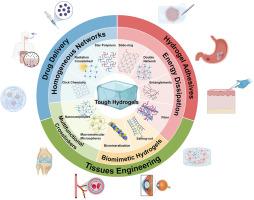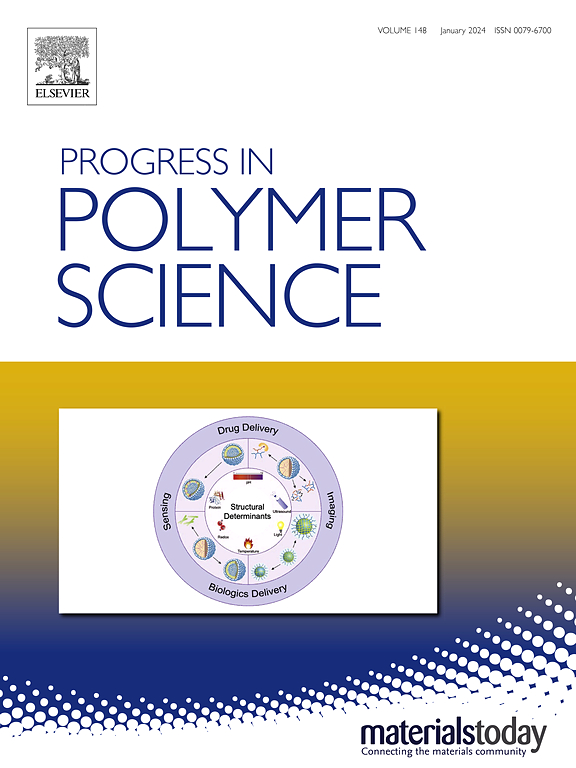Hydrogel toughening resets biomedical application boundaries
IF 26.1
1区 化学
Q1 POLYMER SCIENCE
引用次数: 0
Abstract
Hydrogels have attracted significant interest as promising biomedical materials due to their tunable physiochemical features, tailorable microstructures, high water content, and adjustable mechanical properties Despite their intrinsic advantages, the mismatch in mechanical performance between traditional hydrogels and tissues has severely restricted their utility in practical settings, generating an urgent need for developing tough hydrogels that can be used in continuous load-bearing scenarios without sacrificing other equally important mechanical features. This review summarises the evolving synthesis rationale and strategies to develop tough hydrogels, including recent considerations of biomimetic designs, which enables diverse applications of hydrogels in tissue engineering, adhesives, and drug delivery system Although challenges remain in this field, the translational applications of hydrogels are rapidly progressing, broadening the scope of material science and biomedicine.


水凝胶增韧重置生物医学应用界限
由于其可调的物理化学特性、可定制的微观结构、高含水量和可调节的机械性能,水凝胶作为一种有前途的生物医学材料引起了人们的极大兴趣,尽管它们具有内在的优势,但传统水凝胶与组织之间的机械性能不匹配严重限制了它们在实际应用中的应用。迫切需要开发坚韧的水凝胶,这种水凝胶可以在不牺牲其他同等重要的机械特性的情况下用于连续承载场景。本文综述了韧性水凝胶的合成原理和发展策略,包括最近对仿生设计的考虑,这使得水凝胶在组织工程、粘合剂和药物输送系统中的应用多样化。尽管该领域仍存在挑战,但水凝胶的转化应用正在迅速发展,拓宽了材料科学和生物医学的范围。
本文章由计算机程序翻译,如有差异,请以英文原文为准。
求助全文
约1分钟内获得全文
求助全文
来源期刊

Progress in Polymer Science
化学-高分子科学
CiteScore
48.70
自引率
1.10%
发文量
54
审稿时长
38 days
期刊介绍:
Progress in Polymer Science is a journal that publishes state-of-the-art overview articles in the field of polymer science and engineering. These articles are written by internationally recognized authorities in the discipline, making it a valuable resource for staying up-to-date with the latest developments in this rapidly growing field.
The journal serves as a link between original articles, innovations published in patents, and the most current knowledge of technology. It covers a wide range of topics within the traditional fields of polymer science, including chemistry, physics, and engineering involving polymers. Additionally, it explores interdisciplinary developing fields such as functional and specialty polymers, biomaterials, polymers in drug delivery, polymers in electronic applications, composites, conducting polymers, liquid crystalline materials, and the interphases between polymers and ceramics. The journal also highlights new fabrication techniques that are making significant contributions to the field.
The subject areas covered by Progress in Polymer Science include biomaterials, materials chemistry, organic chemistry, polymers and plastics, surfaces, coatings and films, and nanotechnology. The journal is indexed and abstracted in various databases, including Materials Science Citation Index, Chemical Abstracts, Engineering Index, Current Contents, FIZ Karlsruhe, Scopus, and INSPEC.
 求助内容:
求助内容: 应助结果提醒方式:
应助结果提醒方式:


